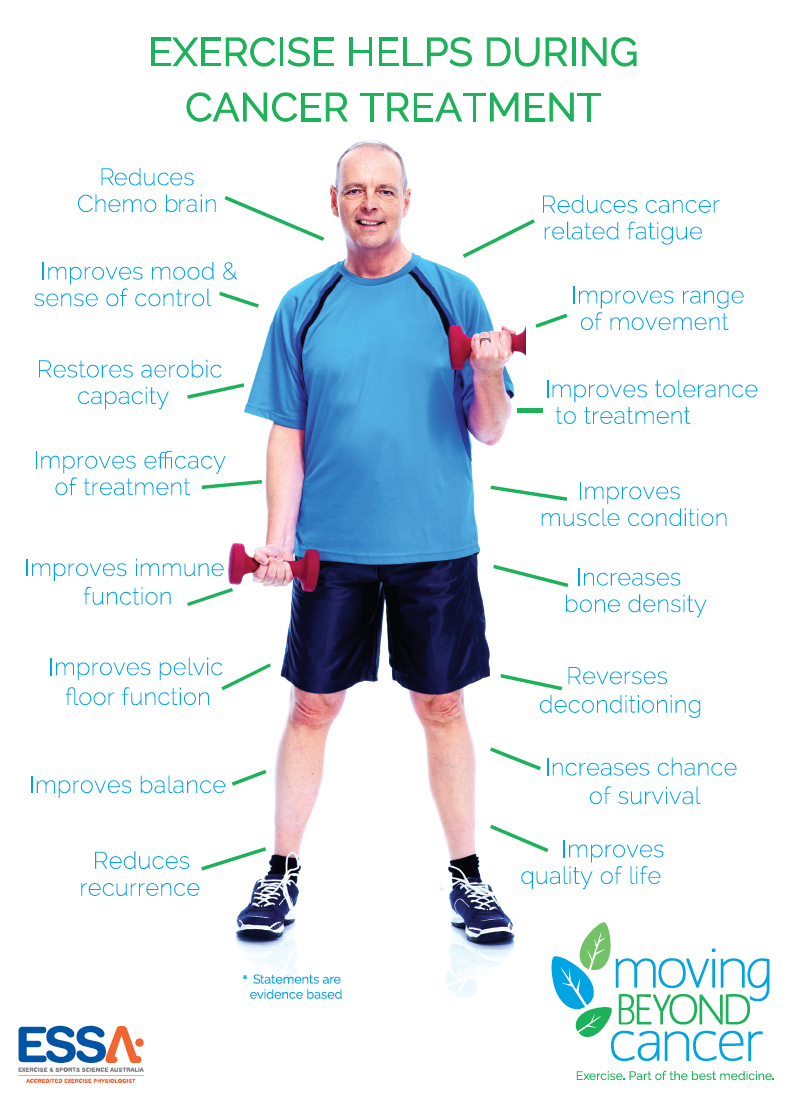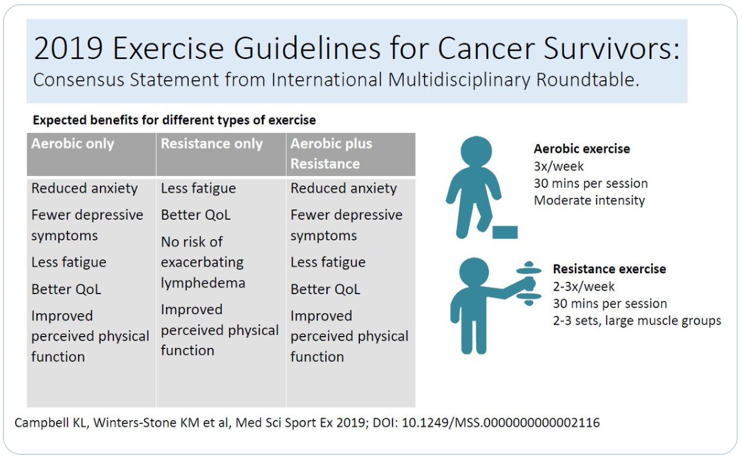Exercise: A Vital Part Of Cancer Management
Written by Ms Dale Ischia
Exercise is a vital part of cancer management. The benefits are not only physical. Exercise can improve mood, symptoms of depression, and also have an impact on the body’s immune system and chances of overall survival. The benefits of exercise in cancer are so widely supported that it is now recommended by the Clinical Oncology Society of Australia that exercise be a part of everyone’s cancer care.
Why Cancer Patients Should Be Exercising?
Did you know that 12 weeks of chemotherapy creates a similar decline in cardiovascular fitness as seen in a decade of ageing?
That’s because cancer and its treatment create a ‘perfect storm’ of deconditioning. Combine the cancer itself with treatment such as chemotherapy or hormonal treatment and you have a rapid ageing process.
The good news is that exercise can slow, prevent or even reverse this deconditioning process.
A major US study done by exercise scientist Lee Jones and his team in 2014 showed that some cancer patients were actually able to increase their cardiovascular fitness by 12% when prescribed a specific program of interval training that allowed for treatment fluctuations and was appropriately progressed.
Another study in 2014 examined 50,000 cancer survivors. It found that those who were physically active after their diagnosis had a 48% greater chance of overall survival and an 18% greater chance of cancer survival.
We do know exercise works.
Cancer-related Fatigue
One of the most common cancer treatment side-effects for all cancers is fatigue. Both chemotherapy and radiation cause significant fatigue. Many studies have proven that exercise is THE most effective intervention to reduce cancer related fatigue.
Exercise And Prostate Cancer
Men undergoing hormone therapy for prostate cancer commonly experience significant side effects, including reduced bone density, muscle mass, and strength, increase in fat, cardiac toxicity and heart disease. The good news is exercise can slow, prevent or even reverse this metabolic syndrome and deconditioning process.
Exercise, in the form of strength training, has been proven to stop the bone loss that occurs in hormone treatment. There is a robust body of evidence to support the beneficial effect of strengthening exercises to counteract the body composition changes that occur with hormonal therapy in men with prostate cancer.
Men are 61% less likely to die of prostate cancer if they exercise more than 3 hours per week at a vigorous intensity.
What Type Of Exercise Is Best?
It is best to use a combination of cardiovascular, strength, flexibility, balance, and core exercise. A consensus statement was released in 2019, following an International Multidisciplinary Roundtable, outlining exercise guidelines for cancer survivors (infographic below).
How To Seek Help?
Ideally, people with a cancer diagnosis should seek the advice of an Accredited Exercise Physiologist (AEP) to get an appropriate exercise program individually designed for them. Go to ESSA.org.au to find an AEP and check that they specialise in Oncology.
Everyone with a cancer diagnosis should be exercising. Not only are there many physical benefits, but the psychological benefits are immense. It provides a positive focus and gives people an important sense of control. Everyone challenged with a cancer diagnosis should be encouraged to keep moving or start moving. It might be as simple as starting with a walk. Start small and build up – it’s never too late.
Ms Dale Ischia is an Accredited Exercise Physiologist specialsing in oncology. She runs Moving Beyond Cancer in Camberwell, Heidelberg, Deepdene, Carnegie & Knox.
December 2019







